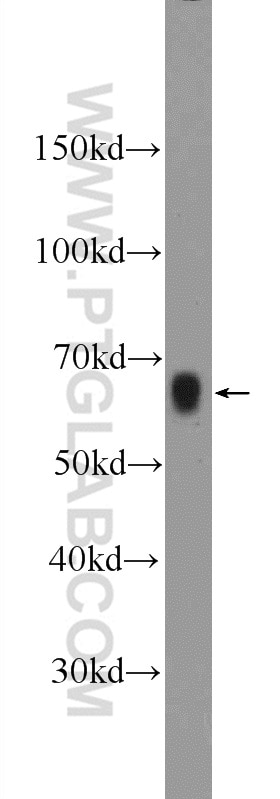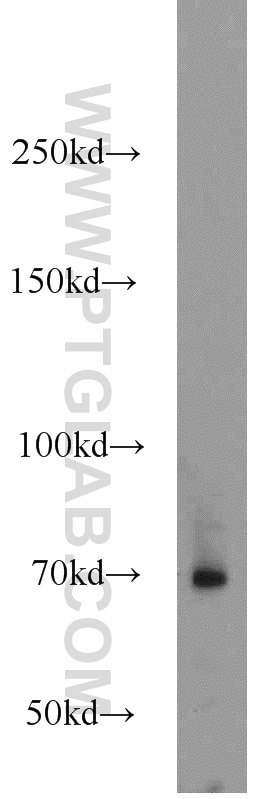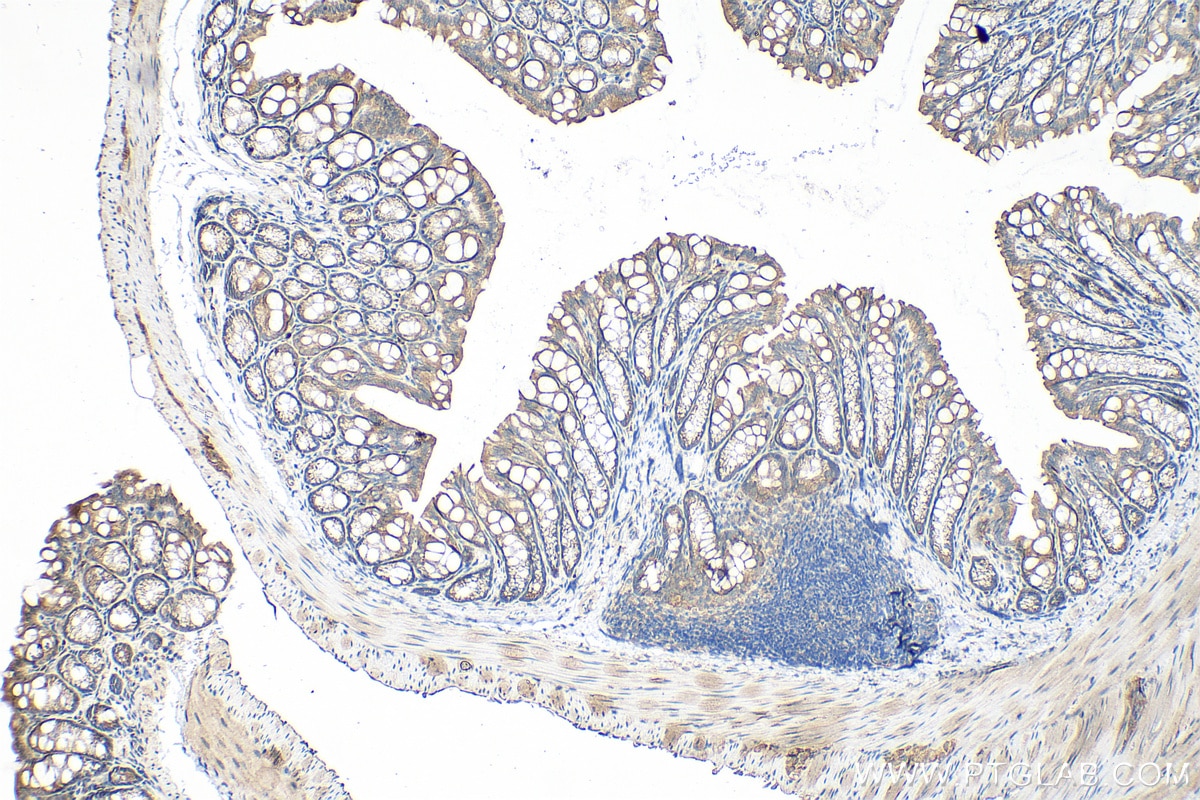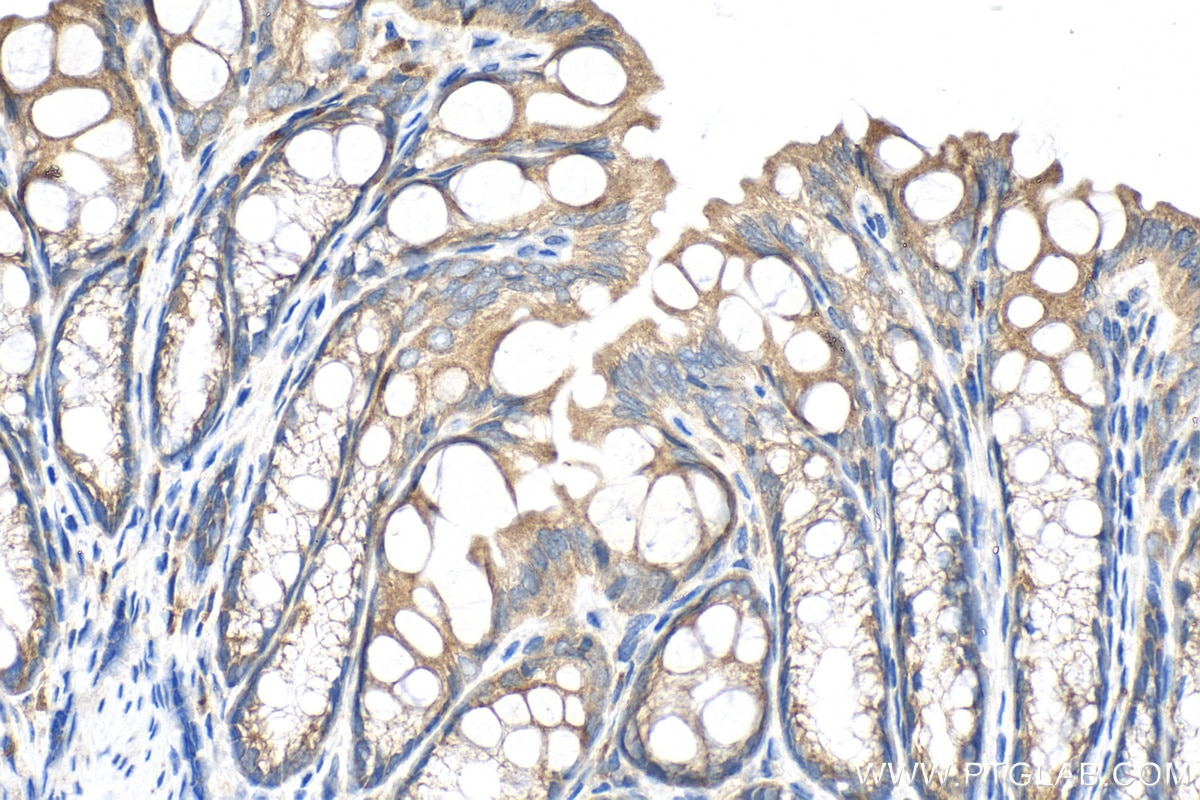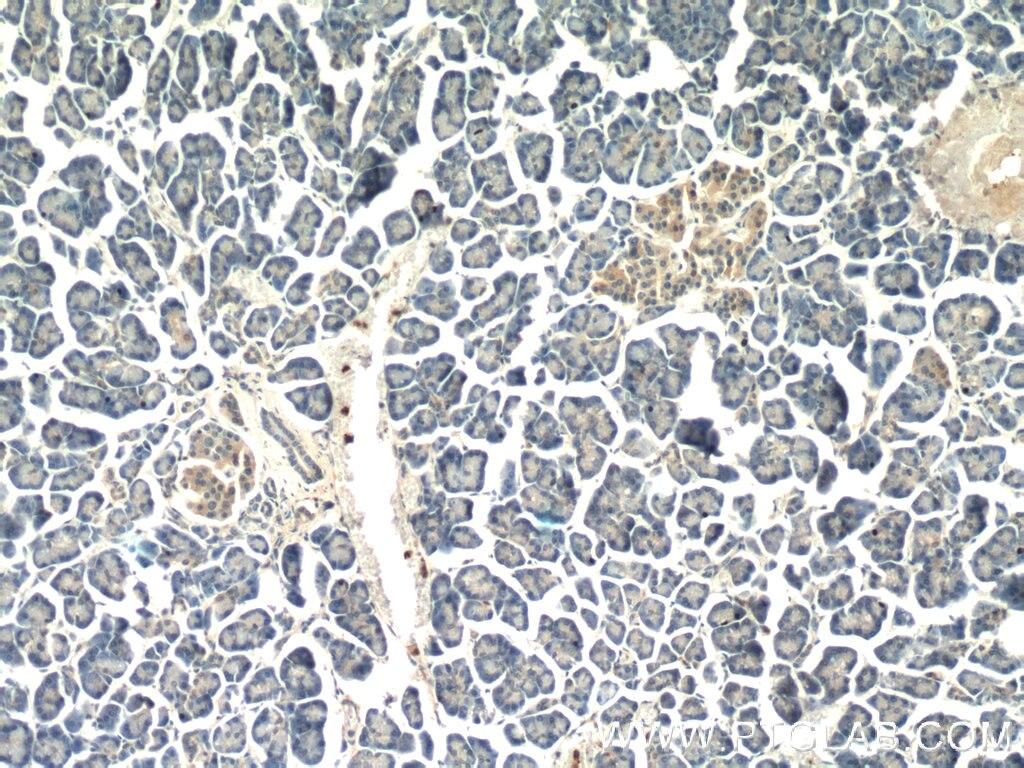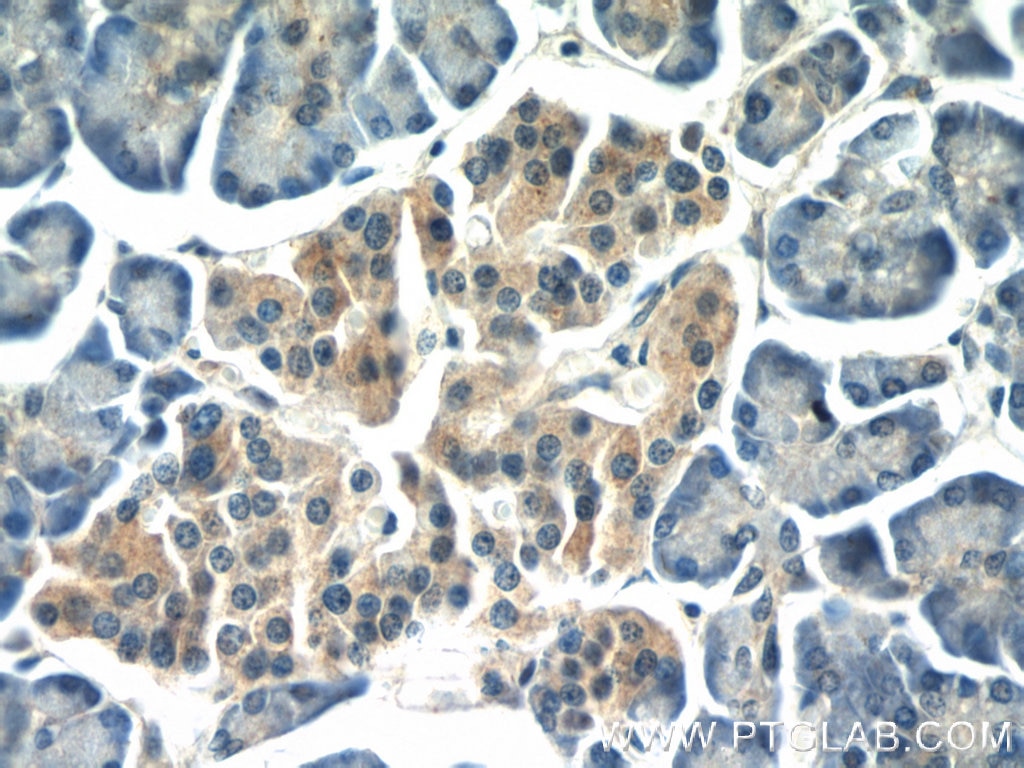AOAH Polyklonaler Antikörper
AOAH Polyklonal Antikörper für WB, IHC, ELISA
Wirt / Isotyp
Kaninchen / IgG
Getestete Reaktivität
human, Maus, Ratte
Anwendung
WB, IHC, IP, ELISA
Konjugation
Unkonjugiert
Kat-Nr. : 12911-1-AP
Synonyme
Geprüfte Anwendungen
| Erfolgreiche Detektion in WB | Maus-Kolongewebe, Mausmilzgewebe |
| Erfolgreiche Detektion in IHC | Maus-Kolongewebe, humanes Pankreasgewebe Hinweis: Antigendemaskierung mit TE-Puffer pH 9,0 empfohlen. (*) Wahlweise kann die Antigendemaskierung auch mit Citratpuffer pH 6,0 erfolgen. |
Empfohlene Verdünnung
| Anwendung | Verdünnung |
|---|---|
| Western Blot (WB) | WB : 1:500-1:1000 |
| Immunhistochemie (IHC) | IHC : 1:50-1:500 |
| It is recommended that this reagent should be titrated in each testing system to obtain optimal results. | |
| Sample-dependent, check data in validation data gallery | |
Veröffentlichte Anwendungen
| WB | See 1 publications below |
| IP | See 1 publications below |
Produktinformation
12911-1-AP bindet in WB, IHC, IP, ELISA AOAH und zeigt Reaktivität mit human, Maus, Ratten
| Getestete Reaktivität | human, Maus, Ratte |
| Wirt / Isotyp | Kaninchen / IgG |
| Klonalität | Polyklonal |
| Typ | Antikörper |
| Immunogen | AOAH fusion protein Ag3892 |
| Vollständiger Name | acyloxyacyl hydrolase (neutrophil) |
| Berechnetes Molekulargewicht | 65 kDa |
| Beobachtetes Molekulargewicht | 65 kDa |
| GenBank-Zugangsnummer | BC025698 |
| Gene symbol | AOAH |
| Gene ID (NCBI) | 313 |
| Konjugation | Unkonjugiert |
| Form | Liquid |
| Reinigungsmethode | Antigen-Affinitätsreinigung |
| Lagerungspuffer | PBS with 0.02% sodium azide and 50% glycerol |
| Lagerungsbedingungen | Bei -20°C lagern. Nach dem Versand ein Jahr lang stabil Aliquotieren ist bei -20oC Lagerung nicht notwendig. 20ul Größen enthalten 0,1% BSA. |
Hintergrundinformationen
Acyloxyacyl hydrolase (AOAH) is a highly conserved lipase responsible for hydrolyzing the secondary fatty acyl chains of gram-negative bacterial lipopolysaccharides (LPS), resulting in LPS detoxification and attenuation of host inflammation (PMID: 1577781, PMID: 35980963). AOAH has also been shown to have PLA2 function (PMID: 1577781). AOAH was highly expressed at the protein level in lesional psoriatic skin compared to healthy controls (PMID: 34913478). AOAH has been described to be differentially proteolytically processed into both a secreted and cytosolic form in phagocytic cells (PMID: 19755182). Expression of AOAH is primarily attributed to phagocytic cells such as neutrophils, macrophages, DC, and also NK cells (PMID: 33454018).
Protokolle
| PRODUKTSPEZIFISCHE PROTOKOLLE | |
|---|---|
| WB protocol for AOAH antibody 12911-1-AP | Protokoll herunterladen |
| IHC protocol for AOAH antibody 12911-1-AP | Protokoll herunterladenl |
| STANDARD-PROTOKOLLE | |
|---|---|
| Klicken Sie hier, um unsere Standardprotokolle anzuzeigen |
